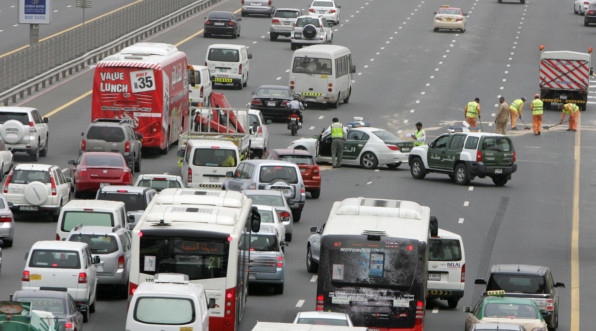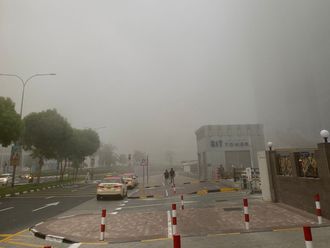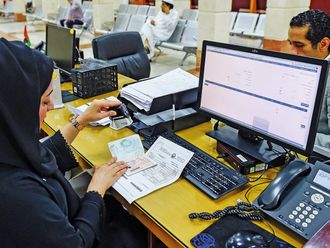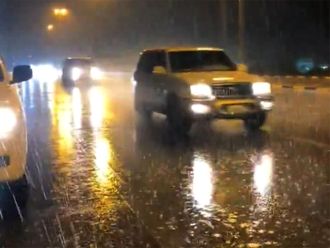
Dubai: The announcement by authorities to launch a six-month pilot project to manage accidents on Shaikh Zayed Road in minimal time has sparked a raging debate on how rampant rubbernecking poses a challenge in these instances.
The Dubai Roads and Transport Authority (RTA) in a statement said it had discussed traffic accident management at a high-level meeting with the Dubai Police, following which they felt the need to reduce the time taken to manage accidents and restore traffic flow.
“It was agreed to implement a project on a tentative basis on one of Shaikh Zayed Road’s sectors for a six-month period,” RTA said, adding that the experiment would be assessed and its positive outcomes adopted on a larger scale. RTA said it would lend logistical support required by the police, including the speedy provision of alternate routes and traffic diversions.
Pubic co-operation
The project’s success, experts reckon, will depend on public co-operation as rubbernecking or the practice of motorists slowing down to take a long look at an accident worsens the situation.
Phil Clarke, principal road safety consultant at Transport Research Laboratory (TRL), which has worked with RTA on incident management, said: “Rubbernecking is extremely rampant, so much so that even when there is an incident which is completely off the road, considerable congestion is caused by people slowing down and sometimes even stopping to look at what is happening. I can assume that it happens through a combination of morbid curiosity and ignorance of the dangers and inconvenience it causes. It is not something which only occurs in the UAE, but it is more prevalent here.”
He said: “Obviously any reduction in the time an incident lasts also reduces the opportunity for rubbernecking, so the pilot on SZR is welcome. It will also assist in reducing the congestion directly caused by the obstruction of live carriageways by accidents, broken down vehicles, debris etc.”
He said in some countries, including the UK, screens are erected to prevent drivers in the opposite direction from being able to see an incident. “But this is practical for incidents lasting a long time. Many incidents attracting rubbernecking in the UAE are minor and short in duration, however, the resulting congestion can last for a considerable period. It is a shockwave effect created by the decay rate of the queue being less than the build-up at the tail end. A typical queue will move off at about 20km at the front once an incident clears, but traffic is still arriving at the tail end at much higher speeds, so it takes time for the queue to dissipate completely.”
Dangers involved
Thomas Edelman, founder of RoadSafetyUAE.com, said, “Rubbernecking is not only impolite but also dangerous. We know how accidents look and there is no reason why we should slow down to soak in another. People are so nosy, they have to do it even if it is a minor fender-bender.”
He said: “When you take your eyes off the road, you can potentially leave your lane, bump into the car ahead of you or suddenly slow the traffic behind you. Visual and cognitive distractions while driving are factors contributing to crash or near-crash involvements.”
Although there are no statistics on how many accidents are directly caused by rubbernecking, there are fair indications. Ministry of Interior figures for the first three months of 2015 show that of the 1,232 accidents in Dubai 156 occurred due to lack of consideration for other road users, 151 from failure to leave enough space between vehicles, 125 from negligence and inattention and 98 from lack of adherence to lanes.
Javed Khamisani, who runs a Twitter account to provide live updates on traffic mishaps and congestion on Dubai roads, said, “On a bad day, there could be 12-15 accidents, major or minor, during rush hour in the city. On SZR alone, there could be five-six incidents. The bigger the accident, the bigger the rubbernecking.”
He said, “This is part of the road traffic culture everywhere in the world, and more so here in the UAE. People are plain inquisitive, they want to see what’s happening, how bad the damage is and if anyone has died or is injured. The authorities and forums like ours need to educate people about the repercussions of rubbernecking.”
Marco Blankenburgh of Knowledgeworkx said: “In a place like the UAE, there are motorists from different countries, each bringing in their own driving culture. While those from a culture with individual accountability are less likely to cause rubbernecking, others from a culture with community accountability tend to stop. For those in the second category, an accident becomes a communal event where they feel compelled to slow down, roll down their car window and even strike a conversation. So there is a strong cultural - and personality - angle to such behaviour.”
Driving tips around an accident site:
In case there is an accident on your side of the street or the other side:
-Concentrate on the traffic around you
-Drive at a decent speed past the scene of the accident
-Be mindful of the vehicles behind you and make sure you don’t slow anyone down
-Follow directions of police or other emergency staff, or motorists who help regulate the flow of traffic before police arrive
-Don’t endanger yourself and those around you by rubbernecking.
Source: RoadSafetyUAE.com













